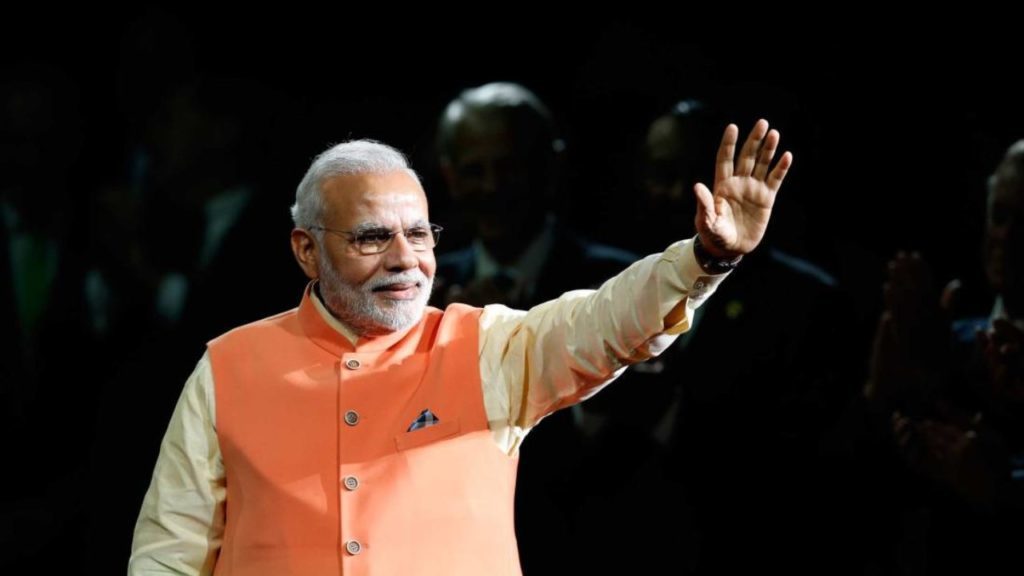PM Modi Plans Mega Connectivity Projects Across India: Top 10 Stunning Projects

Prime Minister Narendra Modi will be unveiling the national master plan for the Pradhan Mantri GatiShakti project on October 13 which fixes mega infrastructure and connectivity targets for India by 2024-25.
The project holds a great significance as this could also become Modi’s showpiece achievement while seeking yet another term in office in 2024.
Top 10 Stunning Projects
This national master plan fixes targets up to 2024-25 for all infrastructure ministries.
- The project will have a network of 2 lakh km of national highways, trains handling cargo of 1,600 million tonnes (MT).
- For Railways, this project targets to handle cargo of 1,600 million tonnes from 1,210 million tons in 2020, decongesting 51% of Railway network by completing additional lines and implementation of two Dedicated Freight Corridors (DFCs).
- In Civil Aviation, the project targets to double the existing aviation footprint to have a total of 220 airports, heliports and water aerodromes by 2025 which would mean building additional 109 such facilities by then.
- The national masterplan Shipping target is to have total cargo capacity to be handled at the ports at 1,759 MMTPA from 1,282 MMTPA in 2020, cargo movement on all national waterways will be 95 million MT from 74 million MT in 2020 and cargo movement on Ganga river will be increased from 9 million MT in 2020 to a massive 29 million.
- It will be doubling the gas pipeline network to 35,000 km, having a total 220 airports, airstrips and aerodromes, a 25000-acre area developed for industries.
- For Power lines, the total transmission network is targeted at 4.52 lakh circuit km and the renewable energy capacity will be increased to 225 GW from 87.7 GW presently, with the aim to generate 35% of all electricity in the country by this channel by year 2024.
- The project will include 11 industrial corridors, achieving a Rs 1.7 lakh crore turnover in two defence corridors in Uttar Pradesh and Tamil Nadu with a targeted investment of Rs 10,000 crore each for the two corridors by 2024-25.
- It will have 38 electronics manufacturing clusters by 2024-25 with total production in these clusters expected to be Rs 15 lakh crore by then which will involve the development of 23 new clusters with plug & play facilities.
- In case of Telecommunications department, the target is 35 lakh km of Optical Fibre Network (OFC) to be laid by 2024, including connecting all villages of the country with OFC by 2023 and with 4G mobile connectivity by 2022.
- The project includes a total of 109 pharma and medical device clusters by 2024-25 with development of 10 new pharma clusters by financing common facilities worth Rs 20 crore each with establishment of three bulk drug parks and four medical device parks which are expected to reduce dependence of the country on imports of APIs and medical devices.
PM GatiShakti Project
This plan is now ready to be initiated and sixteen central departments are part of the national master plan.
The government is expected to set up an Empowered Group of Secretaries (EGoS) of all these departments.
They will work under the chairmanship of the Cabinet Secretary for approving any changes in the master plan to meet any emerging requirements till 2024-25.
There will be an Integrated Multimodal Network Planning Group (NPG) with senior officials, who will be responsible for unified planning and integration of these proposals.
The official note on the PM GatiShakti project says that “In the proposed national master plan, all existing and proposed economic zones have been mapped along with the multimodal connectivity infrastructure in a single platform ranging in three time periods, i.e., status as on 2014-15, achievements made by 2020-21 and planned interventions up to 2024-25 for movement of people, goods and services. The comprehensive map provides a bird’s eye view of infrastructure development with key layers based on completion timelines of various economic zones, infrastructure and utilities across the country,”.

Comments are closed, but trackbacks and pingbacks are open.